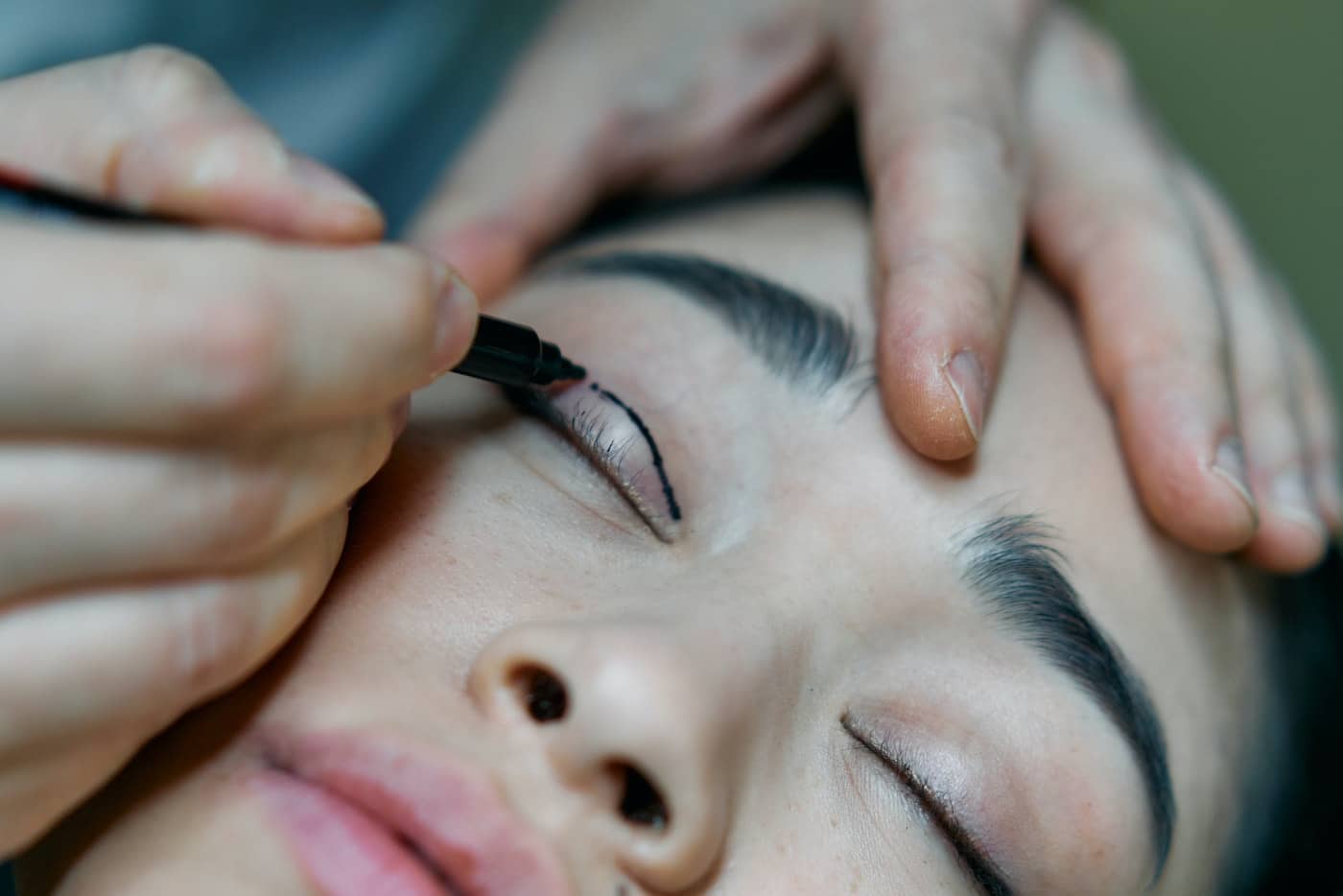There is a plethora of information on the internet about plastic surgery. Much of it is intended to promote a particular surgeon or highlight a procedure as being the next “miracle.”
When people have questions and want honest answers, unless they have a plastic surgeon in the family, it is often hard to find “real” answers to some very common questions.
We turned to Chicago Board-Certified Plastic Surgeon Dr. Michael Horn for some honest answers that are likely “Googled” every day.
How long do breast implants last until they have to be removed and done again?
Although the implants themselves last forever, their structural integrity does not.
Over time, the average wear and tear could cause a rupture or leak. In general, saline or silicone implants should be replaced or removed every 10 to 15 years if you notice any changes.
A rupture in a saline implant tends to be more noticeable, as the deflation is visible.
While that may sound scary, it’s actually quite harmless, as the saline is just absorbed by the body.
However, it is not as easy to notice if a silicone implant has ruptured.
For this reason, most doctors will recommend an MRI every 2 years for their patients with silicone implants to check for leaks.
Implants may need to be removed or replaced for other reasons too, but in general, should last from 10 to 25 years.
If I have fat removed through liposuction, will it reappear elsewhere?
Technically, yes, it is possible for the fat to return, but only if you let it come back.
If the patient maintains their weight, the fat will not return or appear somewhere else on your body.
A little bit of weight gain is fine, such as 5 to 10 pounds, as long as patients stay close to their “post-lipo weight”.
Because fat cells accumulate in an evenly distributed manner, weight gain tends to be more noticeable in areas that are untreated than treated.
So, even patients who gained a considerable amount of weight post-lipo look better than they did if they had not undergone surgery.
After repeated Botox injections, will facial muscles ever lose the ability to frown?
Even though one of the side effects of Botox is difficulty smiling or frowning, the effects of Botox wear off in 3 to 4 months.
Repeated use of Botox causes the muscles treated to atrophy and thin out.
When they “wake” back up they tend to be weaker and less likely to make wrinkles.
This is why many consider Botox a great anti-aging treatment.
Botox can be administered in a way in which it does not freeze the muscle completely. This is something you would discuss with your injector.
Discuss with the injector what your goals are. Some people such as actors need to be able to express themselves.
In this case, Botox can be administered so as not to freeze the muscle completely. Others want certain muscles not to move at all.
An experienced injector has the knowledge to make adjustments. We also have the ability to combine Botox with other treatments to assist your goals.
I thought silicone breast implants can rupture, so why are they still used?
Both saline and silicone implants can leak. But, it is much harder to tell when a silicone implant has ruptured over a saline implant.
Someone with silicone implants may go months or even years without noticing. This is due to the very thick and viscous silicone filling, moving only at very slow rates.
It will generally stay within the capsule of breast tissue surrounding your implant, which makes for a simple replacement.
Additionally, silicone is the gold standard against which other implantable materials get compared. It is a safe material when used in the human body.
Will liposuction eliminate cellulite?
Although patients used to think liposuction could eliminate cellulite, today doctors are not recommending it for that use.
In some cases, liposuction can actually make the cellulite worse by creating more dimples in the skin.
While it is true that excess fat can make cellulite worse, it’s not the real cause.
Liposuction on the thighs and butt only marginally improves the appearance of cellulite.
On the contrary, thin skin in these areas can exacerbate the problem, especially in older women where the skin tends to be less elastic.
Doctors have found that ultrasound and laser-assisted liposuction can effectively reduce cellulite because it tightens the skin as it removes fat. But again, these alone will not rid you of cellulite.
Will I have to wear my hair over my ears to cover face-lift scars?
On average, face-lift scars around the ears take about six months to fade and become almost invisible.
You probably are going to want to wear your hair down for the first month for recovery purposes.
It’s best to choose a hairstyle within this time that will not apply added pressure to the area of the incision while still helping to cover up the scar at the same time.
Ask your doctor how soon it is safe for you to wear makeup over the scar as a cover-up option until they fully fade.
Can my breast implants pop?
Unfortunately, yes breast implants can “pop”, but it is rare and easily treatable.
Both saline and silicone implants have an outer shell that can potentially develop a tear, called a rupture.
The rupture could be caused by a variety of things such as normal aging of the implant, trauma caused by a car accident, a needle insertion during a biopsy, or other factors.
If you experience any changes in breast shape and size, and increased pain, firmness, and swelling over a period of weeks, these may be signs that your implant has ruptured.
Most corrective surgeries include removing both implants and replacing them in the same surgery.
Your surgeon might also recommend that you switch to a different type of implant.
In any case, discuss with your doctor in detail the best option to avoid the risk of rupture in the future.
What happens if I’m not happy with my surgical results?
The first step is to be patient. Some patients look good in as fast as three weeks, others three months, and, for some, the full results aren’t apparent until six months after surgery.
You should wait for all the post-surgical swelling and bruising to go away completely before fretting over the end result.
With that being said, speak up if you are feeling anxious. At your follow-up appointment, it is perfectly fine to voice to your surgeon that you are feeling disappointed.
A good doctor will address your concerns, walk you through the recovery process, and if necessary, talk about the next steps.
How soon after my lipo can I have sex?
After having a procedure like liposuction or a tummy tuck, you will definitely feel some moderate soreness and swelling. It’s normal.
When it comes to resuming sexual activity, your personal level of comfort plays a large factor as there is no specific body structure you can damage after liposuction.
This means your soreness or the healing process of your incisions may be the only thing stopping you from being intimate.
As soon as you feel both physically and emotionally ready, you are safe to resume having sex. For most patients, it takes about a week.
But if we removed excess fat on large areas of your thighs, belly, and/or buttocks, you might have to wait a week to ten days.
Before then, your body will be tender and that could make the experience painful.
What is the youngest age you would consider performing a facelift?
When evaluating a patient for facelift surgery, age is only a relative consideration.
I’ve performed facelifts on patients under 40 years of age who lost a lot of weight causing their faces to deflate and sag.
That being said, most facelift or neck lift procedures are performed on patients between 45-70 years old. If the volume loss can be managed by treatments other than facelift surgery, patients will opt for them.
However, once those minimally invasive or noninvasive treatments no longer cut it, a patient can choose to have a facelift. For some patients that may be in their early 40’s.
What is “better” – Liposuction or non-invasive techniques such as Coolsculpting?
Liposuction is an excellent option for reducing larger deposits of excess fat. It can significantly improve your body in several areas at once.
Some downsides include a higher cost and greater risk for health complications than noninvasive techniques.
Nonsurgical fat reduction may be a better fit if you are already at your ideal weight, have good skin elasticity, and want to target smaller, stubborn trouble spots.
However, the results will not be as dramatic as liposuction and multiple treatments may be necessary over a longer period of time than one liposuction surgery takes.
Dr. Michael Horn
Board- Certified Chicago, Illinois Plastic Surgeon
www.lakeshoreplasticsurgery.com
With more than 10,000 breast augmentation surgeries performed during his career of more than 23 years, Dr. Horn is known in the Chicago land area as the authority on breast augmentation. His artistic eye, mastery and surgical skill in performing various face and body procedures, his dedication to patients’ safety, combined with his focus on unparalleled care and attention, make him one of the most sought-after surgeons in the Midwest.
Dr. Horn earned his medical degree at Loyola University in Chicago. He completed a general surgery residency with the Medical College of Wisconsin, as well as a sub-specialty training in plastic surgery with a second residency at Loyola University. Dr. Michael Horn is board certified by the American Board of Plastic Surgery and is a member of the American Society of Plastic Surgeons and the Chicago Society of Plastic Surgeons.
Dr. Horn is a frequent lecturer on the subject of plastic surgery and his work has been featured in several professional publications. He frequently attends national meetings to continue developing innovative plastic surgery techniques. His ongoing commitment to patient safety and satisfaction is evident in the personal attention and care he provides to each of his plastic surgery clients. From the initial consultation to the final follow-up exam, Dr. Horn provides compassionate treatment tailored to the specific needs and goals of each individual.





